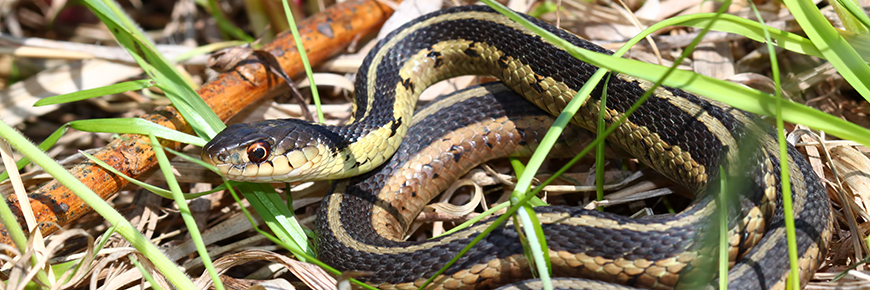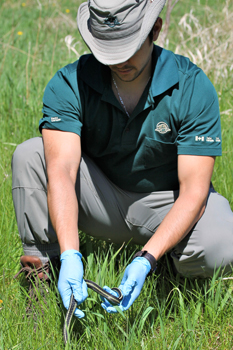
Protecting snakes in the Rouge… in the field and at home?
Rouge National Urban Park
During the winter of 2020, Jory Mullen, a Parks Canada Ecosystem Scientist in Rouge National Urban Park, kept snakes in her bedroom. Not many people can say they take their work home with them to that extent.

In the fall of 2019, several weeks before snakes in the park start travelling to their overwintering sites, Rouge ecologists collected 24 northern red-bellied snakes, Dekay’s northern brown snakes and eastern garter snakes and placed them into artificial hibernation as part of a survey. Once park offices were closed due to COVID-19, Jory, a fully licensed Wildlife Custodian with Authorization through the Ministry of Natural Resources and Forestry, took them in temporarily.
“I have a room at home that isn’t heated,” says Jory. “So I can control the temperature by opening and closing the window. I had a temperature sensor that would wake me up in the middle of the night if it dipped too cold.” Now that is dedication.
To collect the snakes, the team placed sheets of plywood or “cover boards” close to two buildings in the park due to be decommissioned. Snakes are attracted to the cover boards because they retain the heat of the sun throughout the day while allowing the snakes a place to warm up safe from predators. The snakes were then collected by hand from the cover boards and taken to terrariums in one of the park offices, then later to Jory’s home.
The process of assessing a species for protection is a lengthy one. Although none of these snakes are currently listed as endangered or threatened, Parks Canada noticed a decline in their population in the Rouge. Rather than waiting for the snakes to be listed as species-at-risk, the team decided to take action.
“Herpetofauna - reptiles and amphibians – are very good indicators of wetland health in the Rouge. As we focus on improving the quality and quantity of our wetlands, it is good to do everything to protect all species under the umbrella, instead of focusing very narrowly on the ones that may already be listed and be of special concern,” said Richard de Paulsen, a Parks Canada Resource Management Officer. “Every species, especially species that would prey on smaller invertebrates, insects and isopods, perform an integral role. They help cycle nutrients through that ecosystem,” he adds.
The group of snakes cared for by Jory, Richard and other Parks Canada staff were released back to their park habitat in the spring, and the team feels a great sense of accomplishment. “We wanted to ensure that these specific snakes had the best chance of surviving the winter,” says Richard. “Even though we had to temporarily relocate and care for them, I am certain that they will thrive and live out their best life possible in the Rouge.”
- Date modified :